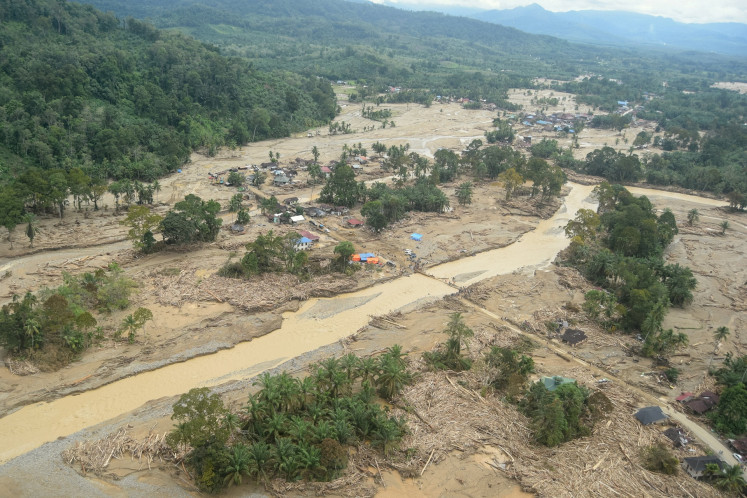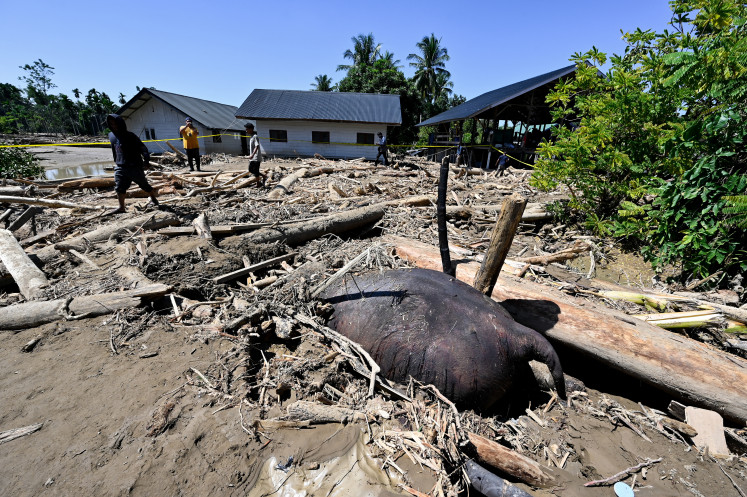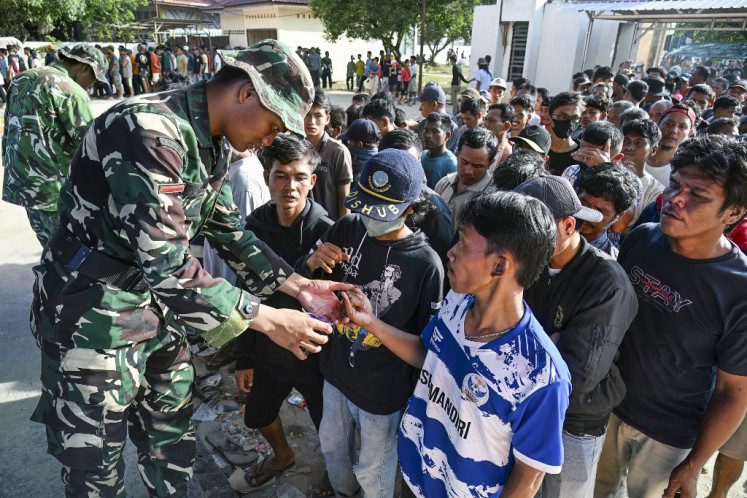Popular Reads
Top Results
Can't find what you're looking for?
View all search resultsPopular Reads
Top Results
Can't find what you're looking for?
View all search resultsGovt ups alert for Soputan, Papandayan alert lowered
Government volcanologists have raised the alert level for Mount Soputan in Minahasa, North Sulawesi, while reporting that the threat posed by Mount Papandayan in West Java had decreased
Change text size
Gift Premium Articles
to Anyone
G
overnment volcanologists have raised the alert level for Mount Soputan in Minahasa, North Sulawesi, while reporting that the threat posed by Mount Papandayan in West Java had decreased.
Warning signs: Mount Soputan spews hot ash and smoke at Tondano Lake in North Sulawesi’s Minahasa regency on Sunday. Mt. Soputan began showing signs of increased volcanic activity on Sunday, posing a threat to area residents. Antara/Andika Wahyu
“We have issued an ‘alert’ status as of 3 p.m. local time on Sunday,” Sandy Manengkey, head of the Volcanology and Geology Disaster Mitigation Center (PVMG) monitoring post for Mt. Soputan, said on Sunday as reported by Antara.
Sandy said that observers recorded that Mt. Soputan had experienced several tremors, noting that the volcano spewed blazing material into the air several times and disgorged a flow of lava about 500-750 meters to the west of the crater.
“Based on our examination, the Volcanic and Geological Disaster Mitigation Center has increased the status of Mount Soputan to ‘alert’,” Sandy said.
The PVMG has established an exclusion zone to protect local residents from the lava. “The safe radius zone for the volcano is 6 kilometers from the crater. [Lava] is still far from people’s residence,” Sandy said.
The escalation of Mt. Souptan’s alert status comes almost a month after Mt. Lokon in Tomohon, North Sulawesi, erupted after several days of increased activity, forcing more than 2,500 residents to evacuate.
Meanwhile, the situation at Mt. Papandayan reportedly improved and residents were urged not to worry about possible explosions.
“Volcanic tremors have been lower in intensity compared to previous days,” Momon, an official at the PVMG’s monitoring post in Cisurupan district, Garut regency, said.
There were only 11 tremors on Sunday, down from 54 on Friday and 23 on Saturday, according to Momon.
“The volcano is not showing the potential to threaten residents at the moment,” he said.
The PVMG raised its alert status for the 2,665-meter volcano on Saturday after detecting increased seismic activity near its crater.
The volcano has a long history of deadly explosions, including an pyroclastic outgassing in 1772 that killed 2,951 people.
It also erupted in 1923, 1925, 1942 and 2002.
Hendrasto, a another PVMG volcanologist, warned of the dangers of magma from the volcano coming into explosive contact with groundwater near Mt. Papandayan in a “phreatic eruption”.
“Besides carrying the threat of phreatic eruptions, the volcano has potential to spew hot gas,” he said.
Indonesia, due to its location on the so-called Pacific Ring of Fire, has several active volcanoes.
More than 300 people died and vast swaths of land were covered in ash during the eruption of Mt. Merapi in Yogyakarta and Central Java last year.










